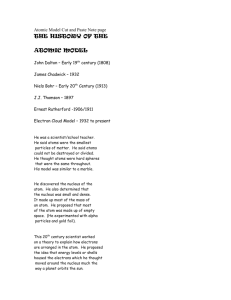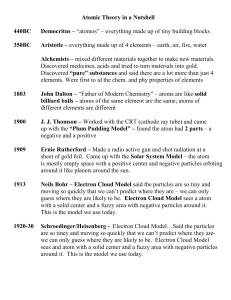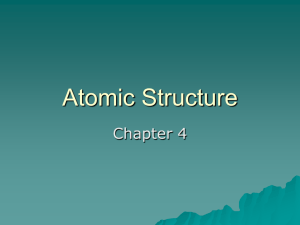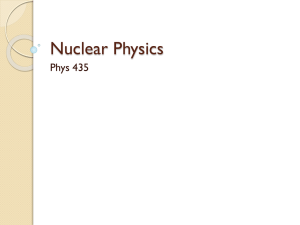History of Chemistry
advertisement
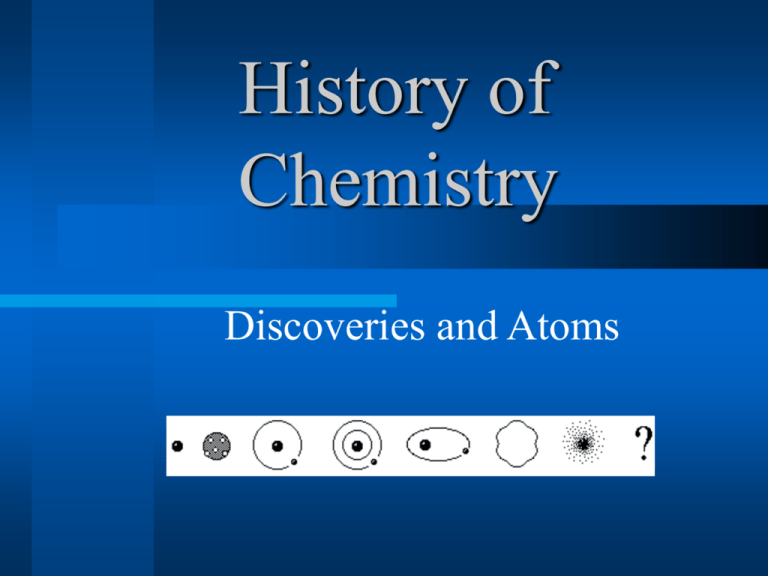
History of Chemistry Discoveries and Atoms Early Greeks Democritus – all matter is made of small, indivisible particles called “atomos” Aristotle – matter is continuous and NOT made of smaller particles Robert 1st Boyle (1600’s) true “chemist” Discovered a relationship between pressure and volume (Boyle’s Law) Antoine Lavoisier Matter cannot be created or destroyed Law of Conservation of Mass Joseph Proust Found that a given compound always contains exactly the same proportion of elements by mass Law of Definite Proportions John Dalton (1800’s) The ratios of the masses of elements in a compound can always be reduced to small whole numbers Law of Multiple Proportions Dalton’s Atomic Theory 1) all matter is composed of tiny particles called atoms 2) the atoms of an element are always identical while the atoms of different elements are different 3) compounds form when atoms combine; atoms combine in small whole number ratios 4) reactions involve reorganization of atoms; the atoms themselves do not change Dalton Proposed the “Billiard-ball model” of the atom Joseph Gay-Lussac (1809) Measured the volumes of gases that reacted with one another to develop the Law of Combining Volumes of Gases Amadeo Avogadro at the same temperature and pressure, equal volumes of gases contain the same number of particles Avogadro’s hypothesis J.J. Thomson Produced a “cathode ray” which was deflected by a negative electric field Thus the ray must be made of negative particles (electrons) J.J. Thomson Since atoms are neutral, they must also have a positive area Plum pudding model J.J. Thomson Protons were found to be 1836 X the mass of an electron Charge of proton is +1 Robert Millikan Oil drop experiment to determine the magnitude of the electron’s charge which is now known as -1 James Chadwick Discovered high energy particles with no charge and the same mass as the proton – the neutron Henri Becquerel Accidentally discovered radioactivity Alpha particles (+2 charge) (Also beta particles, gamma rays) Ernest Rutherford (1911) Tests Thomson’s Plum Pudding Model by shooting alpha particles through a sheet of gold foil Ernest Rutherford Nuclear Model of the Atom Robert Bunsen Found that when heated, different elements produced different colors in a flame Niels Bohr (1912) Electrons “orbit” the nucleus somewhat like planets orbit the sun Planetary Model Arnold Sommerfeld Expanded the Bohr model Electrons travel in orbitals, but the orbitals are not the same shape -- this leads to the electron cloud model of the atom Electron Cloud Model Wolfgang Pauli (1924) Predicted that electrons spin while orbiting the nucleus Pauli’s Exclusion Principle says no two electrons do the exact same thing at the same time de Broglie and Schrödinger Propose that electrons move like wave thus the Wave-Mechanical Model Werner No Heisenberg experiment can measure the position and momentum of a quantum particle simultaneously Heisenberg’s Uncertainty Principle Modern View of the Atom Tiny nucleus surrounded by electron “cloud” Nucleus accounts for all of the mass Arrangement of electrons causes different chemical properties Electron Cloud Model Note: Just as no map can equal a territory, no concept of an atom can possibly equal its nature. These models of the atom simply served as a way of thinking about them, though they contained limitations (all models do).


